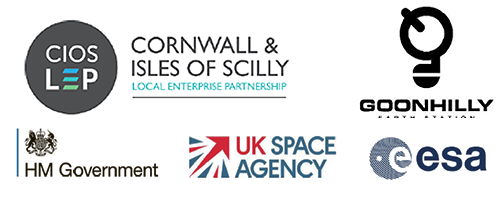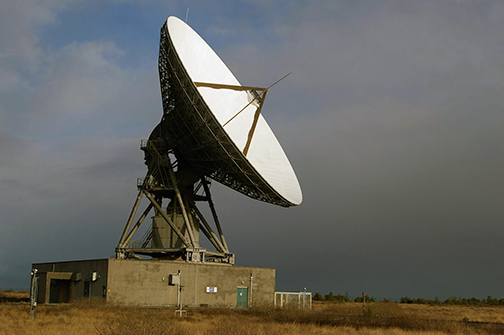
An £8.4 million (9.5 million euros) investment in Goonhilly Earth Station in Cornwall, South West England, will help create the world’s first commercial deep-space communications station, capable of tracking future missions to the Moon and Mars.
Under a new project announced today by the Cornwall and Isles of Scilly Local Enterprise Partnership (LEP), Goonhilly will be upgraded to enable it to provide deep-space tracking and satellite communication services on a commercial basis. This will be the first time the UK has had the capability to communicate directly with deep-space missions. In the future, Goonhilly will complement the capability of the European Space Agency (ESA)’s worldwide ground station network, which today comprises seven core stations supporting more than 20 earth, observatory, planetary and exploration spacecraft as well as European launchers.
The contract is being funded through the LEP’s Growth Deal with the UK Government, via ESA. The investment will see ESA working with Goonhilly to upgrade one of its largest antennas, the 32 meter in diameter GHY-6 antenna that was built in 1985 to meet the high-end performance and technology requirements needed by ESA, NASA and private space exploration companies for deep-space communications, including high bit-rate data links. The investment will provide a huge boost to Cornwall’s space ambitions.

Photo of Goonhilly's GHY-6 antenna.
Once the upgrade work is complete, Goonhilly will have the ability to track and control forthcoming robotic and human missions to the Moon and Mars, making a significant technical and economic contribution to European efforts in global space exploration. During the approximately two-year work to upgrade the antenna — which carried the 1985 Live Aid concert around the world shortly after it was built — qualifying tests will be carried out under ESA’s oversight to include tracking of several of the Agency’s deep-space missions, including the Mars Express spacecraft which has been in orbit around the Red Planet since 2003.
As well as taking on 18 new staff, the team at Goonhilly are expecting a significant upsurge in interest in the space sector in Cornwall. A number of companies are now looking at the growing capability both at Goonhilly and Cornwall Airport Newquay, which are both part of the Aerohub Enterprise Zone offering 100 percent business rate relief. The LEP’s contribution comes from the Government’s Local Growth Fund, which is investing over £70 million through the ‘Growth Deal’ program to improve infrastructure and grow the economy of Cornwall and the Isles of Scilly.
Separately, the LEP has plans to develop a commercial spaceport at Cornwall Airport Newquay. Small satellite launch and sub-orbital flight from UK spaceports could capture a share of a £10 billion global launch opportunity over the next ten years. With new spaceflight laws and grant funding announcements expected in the next few months, Cornwall is well prepared to make the most of this opportunity. According to the UK Space Agency, the global market for space is expected to increase from £155 billion per annum to £400 billion per annum by 2030. The UK Government has set a target of securing 1 percent of this global space economy, £40 billion per annum, by 2030.

Science Minister Sam Gyimah said that all are working hard to ensure the UK thrives in the commercial space age as part of the Government’s Industrial Strategy — it’s fantastic to see the world’s first commercial deep space communications network coming to Cornwall. The UK Space Agency has played a vital role in supporting this partnership and will continue to work alongside industry, local leaders and international partners to grow the UK’s share of the global space market. We already play a significant role in satellite manufacturing, with one in four of the world’s telecommunications satellites built in the UK, and want to establish the UK as a world-leading destination for space launch.
Goonhilly CEO Ian Jones added that a great deal of interest in using the upgraded antenna has been generated from our international customer base. This includes space agencies, such as ESA, as well as some of the new private space exploration companies. The team at Goonhilly, along with colleagues at the LEP, ESA and the UK Space Agency, have been working incredibly hard to achieve this fantastic outcome. All now look forward to getting on with the upgrade work which will bring a new expansion of the company.
The UK’s Local Growth Minister, Jake Berry, added that it is very encouraging to see a Local Enterprise Partnership using Government’s Growth Deal funding to support a rapidly growing sector through public and private sector collaboration. This contract will create skilled new jobs in the local area while assuring Cornwall’s place in history for its contribution to space exploration.
Sandra Rothwell,CEO of the Cornwall and Isles of Scilly LEP, noted that this is a fantastic boost to Cornwall’s space ambitions and significantly enhances what the UK can offer the fast-growing global space industry — which is a key ambition of the Government’s Industrial Strategy. There will be more than 50 lunar and deep space missions planned over the next decade and it means our region can participate directly in global space programs. This is a major strategic investment by the LEP, using Growth Deal funding to build on our existing world-class assets to create an economy fit for the 21st century.
David Parker, ESA’s Director of Human and Robotic Exploration, commented that ESA's missions to the Moon, Mars and beyond help answer profound questions about the origins of life and humanity's place in the Universe. They demand cutting-edge skills and technology while also inspiring the next generation with curiosity and wonder. Upgrading the Goonhilly Earth Station for the new era of space exploration, which involves many countries and organizations around the world, should position it as key player in this exciting future.
Rolf Densing, ESA's Director of Operations, reported that by the middle 2020s, ESA’s deep-space communication needs for current missions, like Gaia and ExoMars, and future missions such as BepiColombo, Solar Orbiter and Juice, are projected to exceed the Agency's current capacity by up to 50 percent. Upgrading Goonhilly and building up a commercial capability to support future exploration missions is good for ESA, good for European science and industry and excellent value for European taxpayers.

